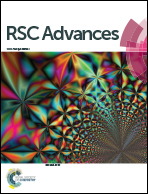Twinning and its formation mechanism in a binary Mg2Si thermoelectric material with an anti-fluorite structure†
Abstract
We investigated twinning and its formation mechanism in a binary Mg2Si thermoelectric material with an anti-fluorite structure. Mg2Si was fabricated via a solid-state reaction using pure Mg and Si and then spark plasma sintered at 50 MPa and 1003 K. Twinning bands, V-shaped twins, three-fold twins, and domains with triple periodicity were observed. The formation of these twins is explained by a self partial-multiplication twinning mechanism associated with partial dislocations and stacking faults similar to those in face-centered cubic pure metals. These results provide insight into the microstructural properties of Mg2Si thermoelectric materials, which will help to improve their figure-of-merit.



 Please wait while we load your content...
Please wait while we load your content...